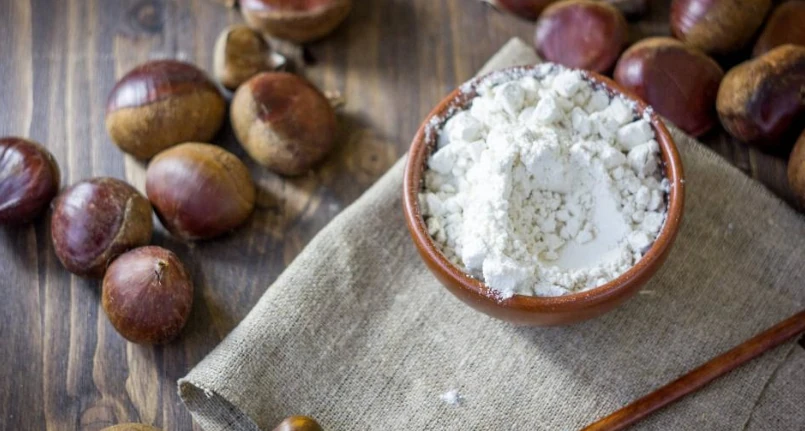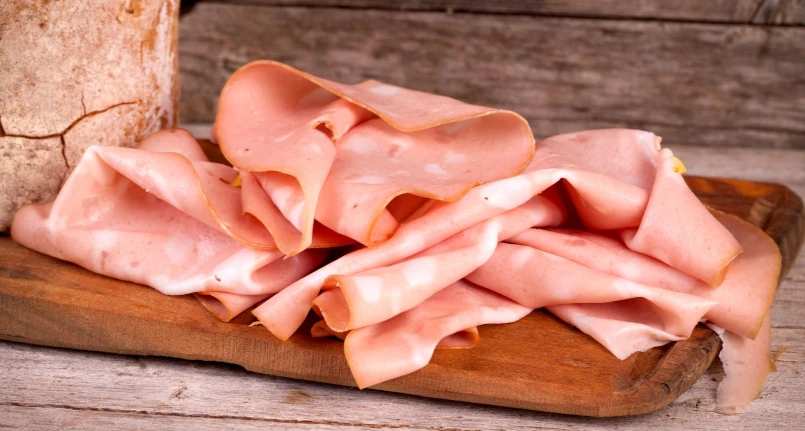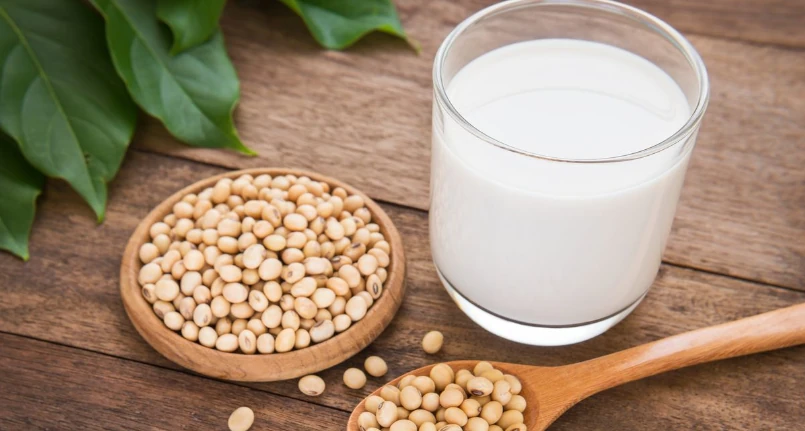Chestnuts are typical of the autumn season and can be eaten in various ways . One of the most versatile is in the form of flour .
What is chestnut flour
Also known as sweet flour , chestnut flour is obtained by drying and finely grinding chestnuts and has an immediately recognizable flavor because it is sweet but quite delicate and never excessive.
Its caloric intake is quite high , and for this reason it was used in the past as a source of sustenance for many peoples.
Today it is usually banned for those who follow a low-calorie diet or for people with diabetes , also because its primary use is as a base for desserts, especially of the popular tradition such as castagnaccio.
Gluten -free , however, it is suitable for feeding intolerants and celiacs and for those who usually have a sensitive stomach , given that it is extremely digestible .
How it is produced
The production of chestnut flour is a process that consists of several steps .
Usually the fruit harvest takes place in the month of October or the last days of September and after this moment the chestnuts are extracted from their wrappings and placed in large bales of jute ready for drying .
The procedure for obtaining chestnut flour is very similar to that necessary for almond or chickpea flour and requires that each fruit be ground and dried for about 30-40 days , so as to completely eliminate the humidity and make it completely dehydrated.
Subsequently the chestnuts are subjected to beating, roasting and grinding . In fact, these are the last steps necessary to obtain the flour, whose consistency is soft and almost impalpable and the color ranges from light hazelnut to ivory , depending on the degree of refinement.
In addition to this classic version which is the most widespread, there are some variants made with more artisanal techniques which keep the flour less refined and give it a slight aftertaste of smoke , given by the fact that the chestnuts are roasted before grinding.
Nutritional values of chestnut flour
Chestnut flour is a rather caloric food . 100 grams of product, in fact, correspond to about 343 Kcal .
These are the other nutritional values , always per 100 grams.
- 6g of protein
- 3.7 g of lipids
- 76 g of carbohydrates
- 11 mg of sodium
- 847 mg of potassium
- 3.2 mg of iron
- 50 mg of calcium
- 164 mg of phosphorus
- 0.23 mg of vitamin B1
- 0.37 mg of vitamin B2
- 1 mg of vitamin B3
- 11 g of water
Properties of chestnut flour
Despite the high caloric level, the composition of chestnut flour makes the introduction of recipes based on this element into one’s diet quite healthy .
In fact, its properties are many , starting from the high fiber content , essential for regulating the bacterial flora and promoting intestinal regularity.
The immune system also benefits from the consumption of chestnut flour, given the high presence of proteins, lipids , vitamin C and group B ; as well as the cardiovascular one being low in cholesterol and rich in mineral salts , the latter also essential for regulating mood, ensuring health and counteracting tiredness and irritability
Finally, iron and folic acid are very useful for fighting anemia and supporting pregnant women.
The many uses of chestnut flour in the kitchen
Chestnut flour, due to its sweetish taste , is often associated with desserts and above all with castagnaccio , a typical Tuscan cake.
However there are many other ways to engage this element in the kitchen . Its undoubtedly characteristic flavour, in fact, can be used to give new nuances of taste to more classic dishes such as fresh homemade pasta , autumn soups or bread . Also excellent as a base for polenta , replacing the classic cornmeal .
Returning to desserts instead, stopping at castagnaccio could be a reductive way of using chestnut flour. Since its consistency is very similar to that of durum wheat flour , it can be used to make cakes, pancakes, muffins, biscuits, plum cakes and much more, also taking advantage of the fact that it is a gluten-free element and therefore extremely versatile .
Where to buy it and how to recognize its quality
Chestnut flour is a basic ingredient of some local Italian culinary traditions and it is not always easy to buy it . In the large supermarket chains you can find some versions but if you want to taste the most authentic chestnut flour, the advice is to get supplies from some local retailer in the Apennine area .
To distinguish a good chestnut flour from a poor one, it is essential to know the characteristics it should have. If it is too dark or with a bitter taste, it is better to leave it alone, while if you are faced with a sweet grain and a delicate color tending towards light beige, you are about to buy a good product.




